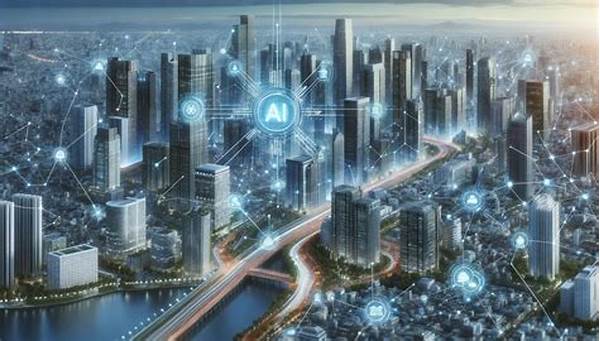How AI Shapes the Future of Smart Cities
Read More : The Future Of Ai In Transportation
The bustling environment of cities, where diversity and dynamism prevail, is about to get a major makeover. Enter the age of artificial intelligence, a digital force poised to revolutionize urban landscapes. Imagine a city where transportation operates seamlessly, energy consumption is optimized to the last watt, and public services are not just reactive, but incredibly predictive. That’s exactly what AI promises—a smarter, greener, and more efficient home for the urban dweller. It’s not just innovation; it’s a paradigm shift in how cities function and flourish. How AI shapes the future of smart cities is a tale still unfolding, but one that’s irresistibly compelling.
Harnessing AI, cities can leverage data like never before. In a scenario more enticing than any utopic dream, traffic congestion could be dramatically mitigated through real-time data analysis and predictive algorithms, sparking a urbanscape where road rage is a thing of the past. It’s an audacious claim, but imagine traffic lights that think, adapt, and optimize traffic flow dynamically. The world of autonomous vehicles fitting into this scheme is not an if, but a when. AI isn’t just showing us a future with reduced carbon footprints, it’s holding the map to get there.
In this vibrant landscape, the question isn’t whether AI will shape cities, but how quickly. Take a second to imagine cities where wastage is minimized not by chasing after it but by cutting it at the source. AI’s prowess in machine learning and data analysis could simulate outcomes, presenting cities with the most sustainable options for future growth and development. The implications? Massive savings in energy and resources, a cleaner cityscape, and a happier citizenry. Moreover, the deployment of AI in city services ensures a tailored experience, from smart bins that sort trash autonomously to infrastructure that anticipates maintenance needs before they escalate.
The Role of AI in Traffic and Transport Management
AI’s transformative touch in urban transportation is palpable, offering solutions that were mere pipe dreams a decade ago. Through sensors, IoT, and AI-powered platforms, cities can now visualize and act on a living map of real-time data. How AI shapes the future of smart cities is seen most vividly here, where autonomous vehicles and AI-driven public transports are redefining commuting. They promise not just efficiency, but a redefined lifestyle with more leisure time and less daily stress.
Innovations in Urban Planning
With AI’s robust data-crunching capabilities, urban planners are reimagining city spaces with precision and creativity. This isn’t just city planning; it’s city sculpting at its very best. How AI shapes the future of smart cities emerges as a pivotal narrative in today’s urban strategy sessions. When AI models predict population growth and simulate infrastructure needs, it empowers decisions that save millions and optimise urban space usage.
In conclusion, embracing AI in the realm of urban planning and management isn’t simply a choice, it’s the route to an optimized future. The adventure in how AI shapes the future of smart cities is one where potentials are continually being discovered, and the roadmap to smarter cities becomes clearer each day.
Tactical Actions to Embrace
A Vision for the Future
The realm of smart cities, brimming with AI-driven potential, isn’t just a technical challenge; it’s a thrilling narrative waiting to be written. The synergy between state-of-the-art technology and urban living ensures a smarter, sustainable future—one where AI isn’t an outsider but a trusted companion. As AI weaves its magic, it’s not just about how AI shapes the future of smart cities; it’s about how citizens embrace, adapt, and champion these changes.
While the technological jargon and high-tech solutions may seem daunting, at its core, AI in smart cities is all about making life better for its inhabitants. The focus is on results that matter—like cleaner energy, safer streets, and happier commutes. If we’re talking ROI, this is where it’s at, folks! As cities grow and evolve, AI is set to become an indispensable ally, not just powering innovation but enriching lives.
And let’s face it, the idea of living in a city that anticipates your needs is just cool. Imagine seamlessly transitioning between different modes of transport without a hiccup, or receiving timely updates that make your day just a little easier. This isn’t some sci-fi fantasy—this is what awaits. How AI shapes the future of smart cities tells a story of possibilities and potential; a future where your city stands smarter, sustainable, and spectacular.
Conclusion: Redefining Urban Lifestyles
The story of how AI shapes the future of smart cities is one of change and innovation. No longer confined to the pages of sci-fi novels, orators, engineers and city planners are now creating practical solutions that will redefine urban living. The roadmap is clear, with AI offering the tools to craft cities that are adaptive, responsive, and efficient. As technology continues to evolve, the horizons of smart cities will only expand, promising a future that’s not only visionary but imminently within reach.


